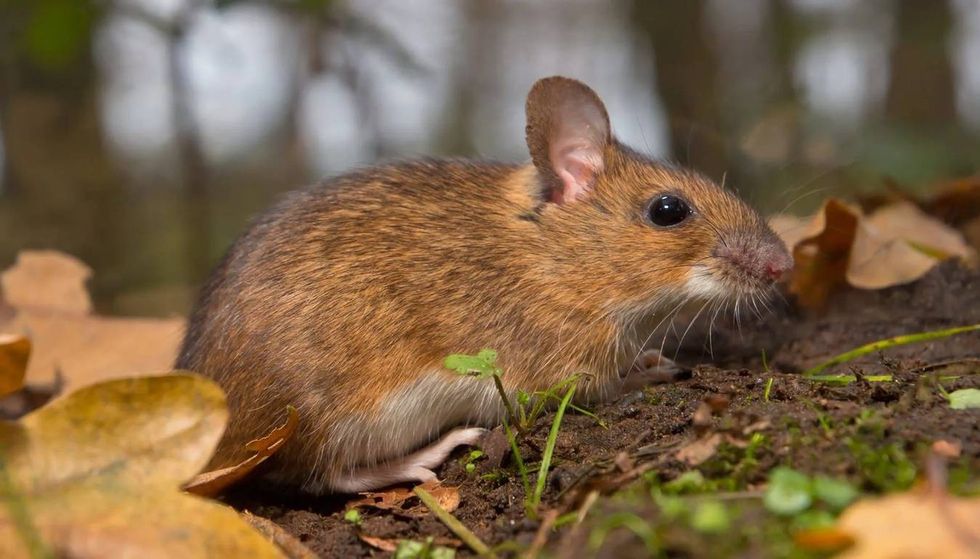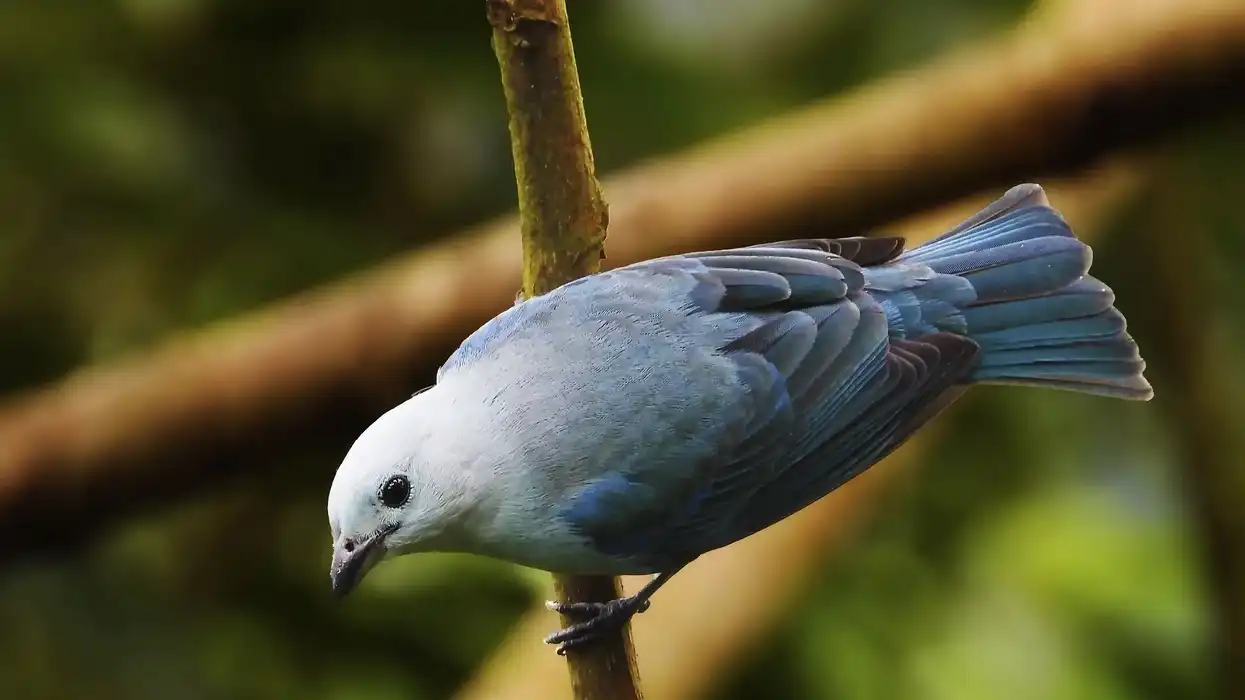The Yellow-eyed Junco is a New World sparrow species native to the North American continent. The bird is found mainly in the countries of Mexico and the United States of America.
In the United States of America, Arizona and New Mexico have noteworthy populations of the Yellow-eyed Junco. This bird species prefers to inhabit the coniferous and mountain forests as well as in pine-oaks woods and also in pastures and fields feeding mostly on insects and seeds.
The Yellow-eyed Junco bird is a close relative of the Dark-eyed Junco, distinguished by the fire-yellow eyes compared to the Dark-eyed Junco's dark eyes.
The Yellow-eyed Junco bird also has a prominent eye mask, a whiter belly, and a rufous back. The Yellow-eyed Junco is a territorial bird during the breeding season and is known to indulge in chasing, posturing, and calling to display aggression.
It also mates for life. It is listed as a species of 'Least Concern' by the IUCN and shows stable population trends.
For more relatable content, check out these fox sparrow facts and Anna's hummingbird facts for kids.
Yellow-Eyed Junco Interesting Facts
What type of animal is a Yellow-eyed Junco?
The Yellow-eyed Junco (Junco phaeonotus) is a bird.
What class of animal does a Yellow-eyed Junco belong to?
The Yellow-eyed Junco (Junco phaeonotus) species belongs to the 'Aves' class of animals.
How many Yellow-eyed Juncos are there in the world?
There are about 4,300,000 mature individuals of the Yellow-eyed Junco (Junco phaeonotus) bird species in the world.
Where does a Yellow-eyed Junco live?
Yellow-eyed Juncos are found mainly in North America, specifically in the country of Mexico. It is also found in the southern parts of the United States of America, in Arizona and New Mexico. They are not a migratory species.
What is a Yellow-eyed Junco's habitat?
Yellow-eyed Juncos live in the coniferous and mountain forests, and pine-oak forests. They prefer to live in elevations of 3,900-11,500 ft (1,189-3,505 m) but may go to lower elevations during winter times. They can also be seen living among ponderosa pines and in the USA's Arizona and New Mexico, also inhabiting oak woodlands, pastures, shrubs, leaf litter, and fields.
Who does the Yellow-eyed Junco live with?
Yellow-eyed Juncos migrate in flocks of about 40 birds. They are also seen in flocks with Dark-eyed Junco birds as well as spotted towhees. They become aggressive towards each other when the time comes to establish territory. They are also seen with pairs, and sometimes the same birds meet up at the same breeding site across multiple seasons.
How long does a Yellow-eyed Junco live?
Yellow-eyed Juncos may live for 3-11 years in the wild. The oldest verified Yellow-eyed Junco is known to have lived for six years and seven months.
How do they reproduce?
Yellow-eyed Juncos reproduce by mating and laying eggs. Males become aggressive with each other while trying to establish territories prior to mating by chasing or through postures. They sing songs to attract mates in addition to strutting and spreading their tails.
Females choose the nest site which is in a clump of grass, among leaf litter, or under a log or rock. The nests are ground hollows made by the females with their feet and bills. The final nest is cup-shaped and bulky, made with grasses, moss, pine needles, hair, and finer grasses.
The female lays 3-5 eggs which are blue and marked with red-brown speckles. The incubation period goes on for 12-15 days.
The chicks are mostly naked and slightly gray with closed eyes when they hatch from the eggs. The nestling period lasts for another 10-13 days. The number of broods laid in a season is 1-3.
What is their conservation status?
The conservation status of the Yellow-eyed Junco bird species according to the International Union for Conservation of Nature is 'Least Concern'.
Yellow-Eyed Junco Fun Facts
What do Yellow-eyed Juncos look like?
The Yellow-eyed Junco looks rather similar to the Dark-eyed Junco, but the 'fire' in its eyes, a prominent orange-yellow gleam sets them apart. It has a gray head, a rufous back, and a white outer tail. The outer tail feathers appear to flash when the Yellow-eyed Junco flies.
The bill is two-toned. The upper mandible of the bird's bill is black, and the lower mandible of the bill is pink.
It also has a white belly and the overall color of the tail is a darker shade of gray. The upper wings are pale gray, as are the rump and the underparts. The Yellow-eyed Junco also has a faint mask that is dark around the eyes.
Juveniles are also an overall gray but with prominent dark streaks and rusty backs.

How cute are they?
Yellow-eyed Juncos are stunningly beautiful animals. They are a smooth gray color overall, with their fire-yellow eyes with the orange gleam being their most noticeable feature. Their outer white tail feathers appear to flash beautifully when in flight. The faint but dark-near-the-eyes mask gives them a mysterious, smart look. The bill is two-toned and adds to their whimsical beauty.
How do they communicate?
Yellow-eyed Juncos communicate via calls and songs.
The call is a high-pitched, metallic chip that sounds like 'seep'. The winter calls of the flocks are quieter twitters produced through closed beaks.
The song is a parted trill sung from high perches. Even-pitched notes that precede a buzzy trill best describes the song of the Yellow-eyed Juncos.
How big is a Yellow-eyed Junco?
Yellow-eyed Juncos are 5.5-6.3 in (14-16 cm) in length with wingspans of 9.4-9.8 in (24-25 cm), which makes them five to six times smaller than the swan goose. They are similar in size but slightly bigger in length than house wrens.
How fast can a Yellow-eyed Junco fly?
Yellow-eyed Juncos may be able to fly at speeds close to 28 mph (45.1 kph).
How much does a Yellow-eyed Junco weigh?
A Yellow-eyed Junco weighs 0.6-0.8 oz (16-23 g).
What are the male and female names of the species?
Like most other birds, males and females of the Yellow-eyed Junco species may be called 'cocks' and 'hens' respectively. But they are not really referred to by any specific names.
What would you call a baby Yellow-eyed Junco?
A baby Yellow-eyed Junco is called a chick.
What do they eat?
Yellow-eyed Juncos are omnivores since they eat insects and plant material. Berries, seeds, fruits, flowers, and buds constitute the plant material they eat. They forage mostly on the ground.
Yellow-eyed Juncos may get preyed upon by hawks, owls, cats, squirrels, chipmunks, shrikes, martens, and weasels.
Are they dangerous?
No, Yellow-eyed Juncos are not dangerous at all.
Would they make a good pet?
Yellow-eyed Juncos are wild birds at heart and one shouldn't attempt to keep them as pets. They thrive in their forested habitats, with their beautiful songs and territorial, seasonal behavior.
It is unlikely that they will survive captive situations. Although, if you live close to their habitat range in Mexico or even Arizona and New Mexico, they will come to feeders (platform or ground) consisting of seeds, mainly sunflower seeds, cracked corn, nutmeats, peanuts. Also, make sure to keep cats away from feeders.
Did you know...
Juncos roost in the conifer or evergreen trees at night. They also use brushes and tall grasses or roosting at night.
Dark-eyed Junco birds live for 3-11 years.
Juncos overall occupy a habitat range from North American countries to Central America up to Panama.
Juncos are aggressive birds. Males are known to become territorial when the breeding season comes around, indulging in posture-display, chasing, and twittering.
The Sky Islands bordering Arizona and New Mexico provide prominent habitats for the Yellow-eyed Junco in America. The Sky Islands are famous for their varying habitats and different ecological systems and species.
Mexican names for Yellow-eyed Junco birds when translated mean, 'the lightning bird' and 'the caster of fire'. Mexican people in olden times believed that the Yellow-eyed Juncos were capable of gathering sunlight and releasing it during nighttime, hence the cool moniker 'the lightning bird'.
Are Juncos friendly?
Yes, Juncos are friendly. These birds may not directly engage with humans since they are indeed wild birds. They readily visit feeders consisting of sunflower seeds and also inhabit human-adjacent fields.
Do Juncos mate for life?
Yes, Juncos do mate for life. These birds go so far as to visit the same breeding grounds to meet up with the same mate in different breeding seasons.
Here at Kidadl, we have carefully created lots of interesting family-friendly animal facts for everyone to discover! For more relatable content, check out these Junco fun facts for kids and Savannah sparrow interesting facts pages.
You can even occupy yourself at home by coloring in one of our free printable sparrowhawk coloring pages.









